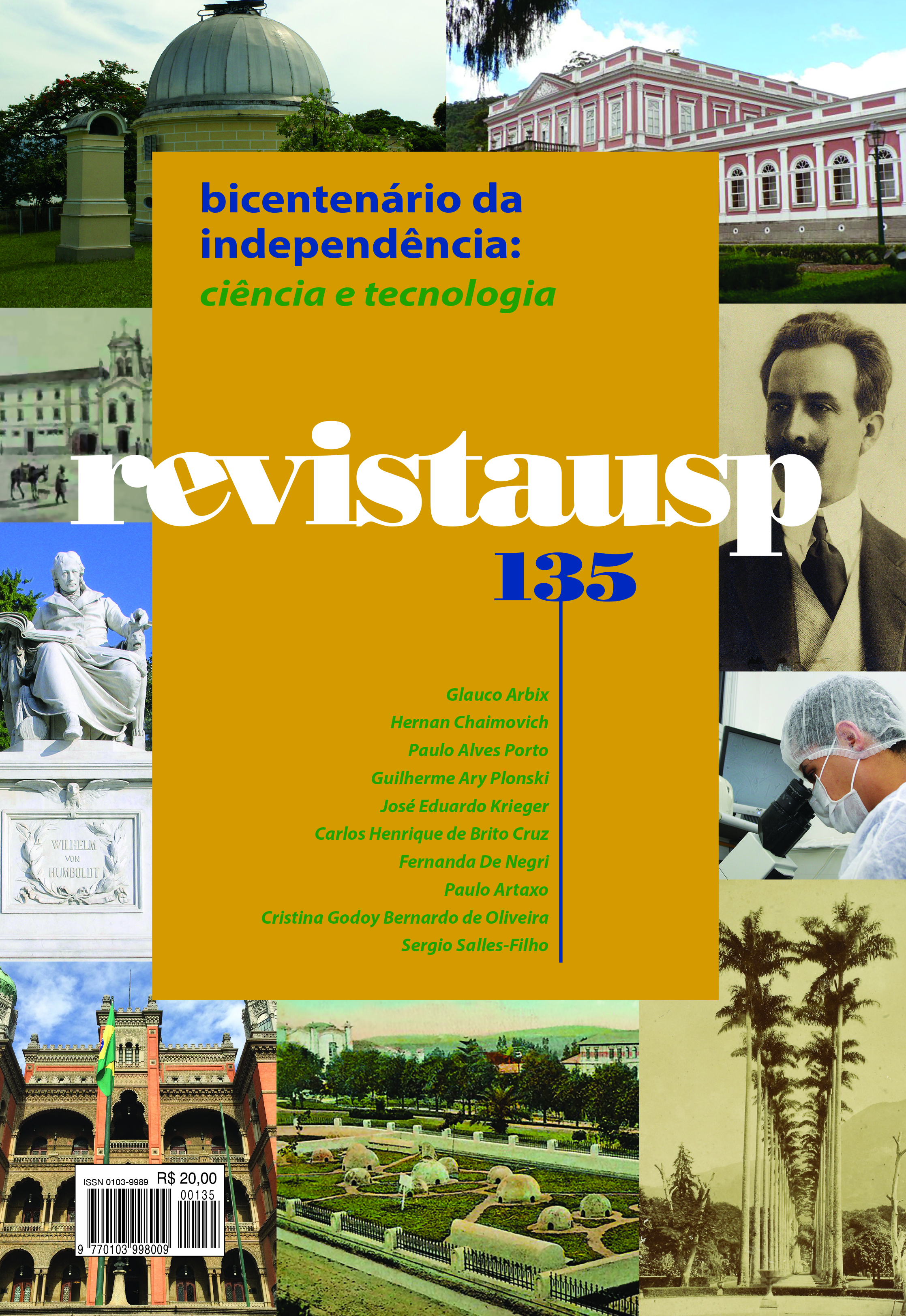Financiando a ciência e a infraestrutura de pesquisa em tempos de crise
DOI:
https://doi.org/10.11606/issn.2316-9036.i135p101-118Palavras-chave:
Infraestrutura científica e tecnológica, Desenvolvimento, CriseResumo
Este artigo discute, a partir de diversos exemplos internacionais, a relevância da infraestrutura científica e tecnológica para o desenvolvimento dos países. São apresentados diversos modelos de organização de sistemas de C&T ao redor do mundo, nos quais esse tipo de infraestrutura desempenha papelchave. No Brasil, as limitações dessa infraestrutura e de suas instituições são um componente a ser aprimorado para que a C&T desempenhe papel ainda mais relevante no desenvolvimento do país. Para isso, contudo, é preciso lidar com a restrição de recursos, que se tornou ainda mais severa nos últimos anos, quando o volume de investimentos públicos em C&T caiu drasticamente.
Downloads
Referências
BARTZOKAS, A. “Country Review Korea”. UNU-MERIT, 2008 (http://ec. europa. eu/investin-research/pdf/download_en/korea. pdf Erişim 24).
BUSH, V. “Science the endless frontier”. Washington, United States Government Printing Office, 1945 (http://www.nsf.gov/od/lpa/nsf50/vbush1945.htm).
DE NEGRI, F. “Políticas públicas para ciência e tecnologia no Brasil: cenário e evolução recente”, 2021 (http://www.ipea.gov.br. http://repositorio.ipea.gov.br/handle/11058/10879).
DE NEGRI, F.; SQUEFF, F. de H. S. Sistemas setoriais de inovação e infraestrutura de pesquisa no Brasil. Ipea, 2016.
DUSDAL, J. et al. “University vs. Research Institute? The Dual Pillars of German Science Production, 1950–2010”. Minerva, 58 (3), 2020, pp. 319-42.
ELZINGA, A. “Features of the current science policy regime: viewed in historical perspective”. Science and Public Policy, 39 (4), 2012, pp. 416-28.
FREEMAN, C. “Technological infrastructure and international competitiveness”. Industrial and Corporate Change, 13 (3), 2004, pp. 541-69.
GIBBONS, M. et al. The new production of knowledge: the dynamics of science and research in contemporary societies. Sage, 1994. HALLONSTEN, O.; HEINZE, T. “Institutional persistence through gradual organizational adaptation: Analysis of national laboratories in the USA and Germany”. Science and Public Policy, 39 (4), 2012, pp. 450-63.
HRUBY, J. M. et al. “The Evolution of Federally Funded Research & Development Centers”, 2011 (http://fas.org/pubs/pir/2011spring/FFRDCs.pdf).
JACOB, M.; HALLONSTEN, O. “The persistence of big science and megascience in research and innovation policy”. Science and Public Policy, 39 (4), 2012, pp. 411-15.
KINNEY, A. L. “National scientific facilities and their science impact on nonbiomedical research”. Proceedings of the National Academy of Sciences, 2007 (https://doi.org/10.1073/pnas.0704416104).
OECD. OECD Reviews of innovation policy industry and technology policies in Korea. OECD Publishing, 2014.
ROBIN, S.; SCHUBERT, T. “Cooperation with public research institutions and success in innovation: Evidence from France and Germany”. Research Policy, 42 (1), 2013, pp. 149-66.
ROSENBERG, N. “Scientific instrumentation and university research”. Research Policy, 21 (4), 1992, pp. 381-90.
ROSSI, F.; ATHREYE, S. “United Kingdom”, in A. Arundel; S. Wunsch-Vincent; S. Athreye (eds.). Harnessing public research for innovation in the 21st Century: an international assessment of knowledge transfer policies. Cambridge, Cambridge University Press, 2021, pp. 141-81.
SCHWARTZMAN, S. Formação da comunidade científica no Brasil. Vol. 2. Rio de Janeiro, Companhia Editora Nacional, 1979.
SOLLA PRICE, D. J. de. Little science, big science – and beyond. New York, Columbia University Press, 1963.
STEPHAN, P. E. “The economics of science”. Journal of Economic Literature, 34 (3), 1996, pp. 1.199-235.
TASSEY, G. “The functions of technology infrastructure in a competitive economy”. Research Policy, 20 (4), 1991, pp. 345-61.
WEINBERG, A. M. “Impact of large-scale science on the United States”. Science, julho, 1961.
WEINBERG, A. M. “Criteria for scientific choice”. Minerva, 1 (2), 1963, pp. 159-71.
WESTWICK, P. J. The national labs: science in an American system, 1947-1974. Cambridge, Massachusetts, Harvard University Press, 2003.
Downloads
Publicado
Edição
Seção
Licença
Copyright (c) 2022 Revista USP

Este trabalho está licenciado sob uma licença Creative Commons Attribution-NonCommercial-ShareAlike 4.0 International License.
|
Pertence à revista. Uma vez publicado o artigo, os direitos passam a ser da revista, sendo proibida a reprodução e a inclusão de trechos sem a permissão do editor. |


